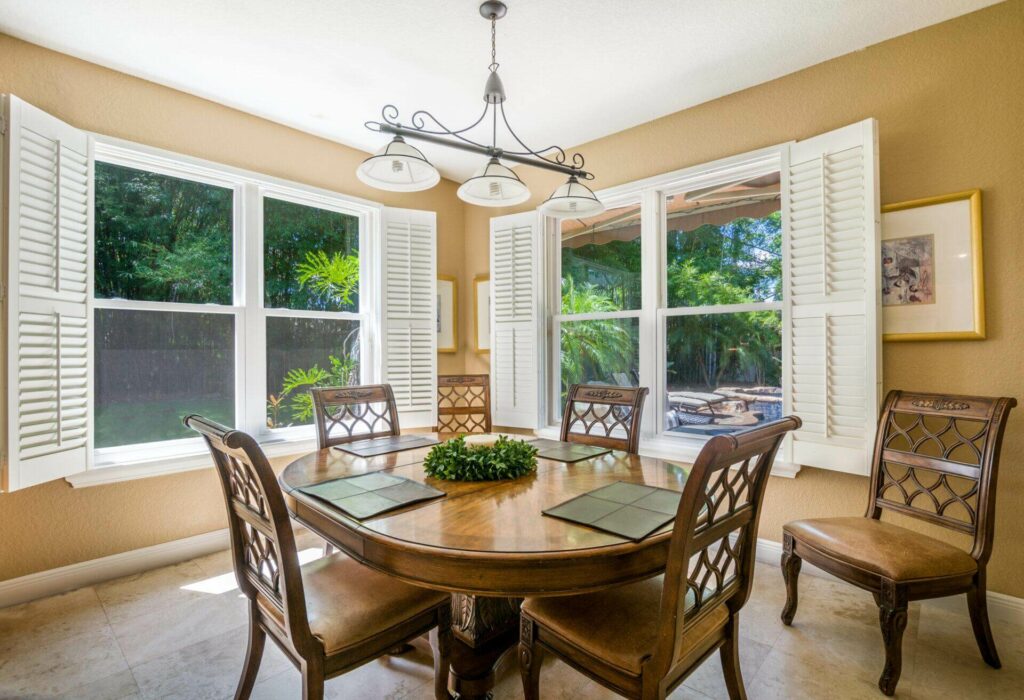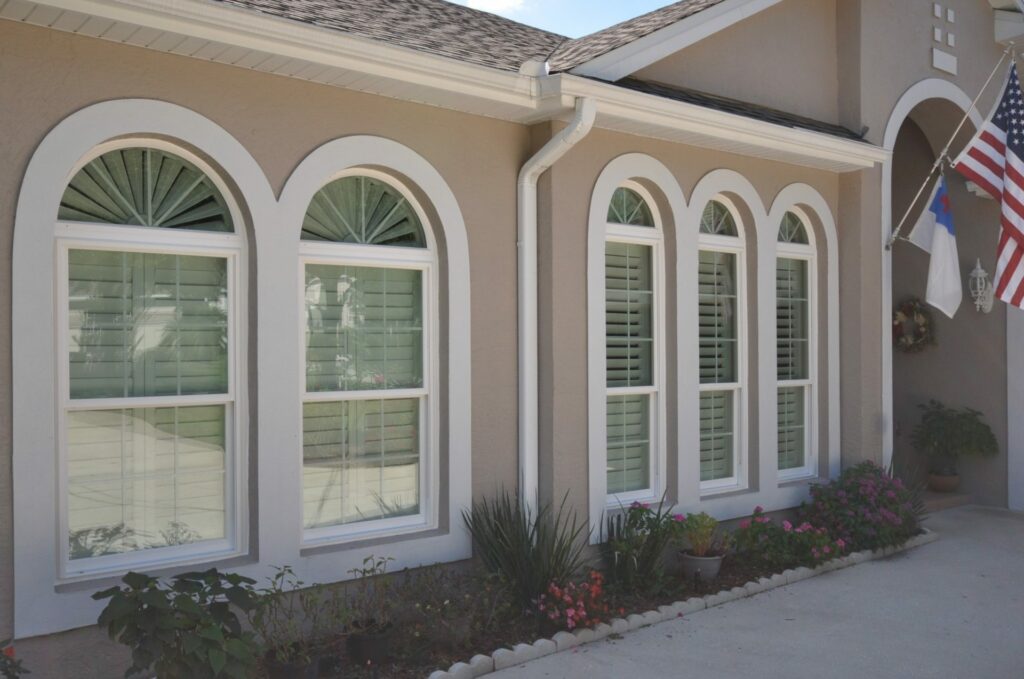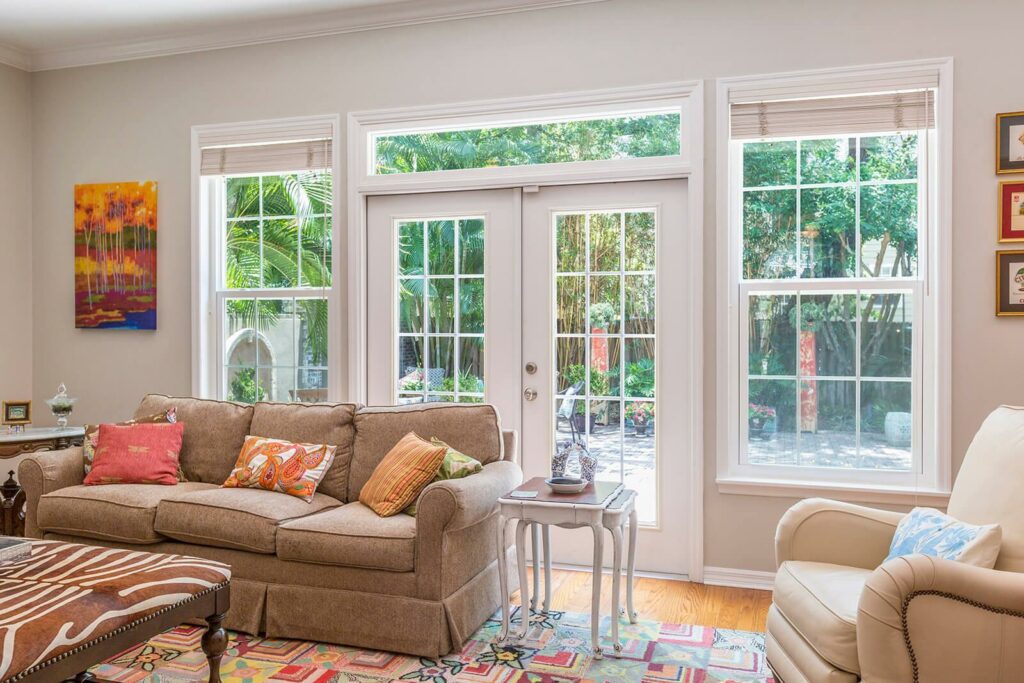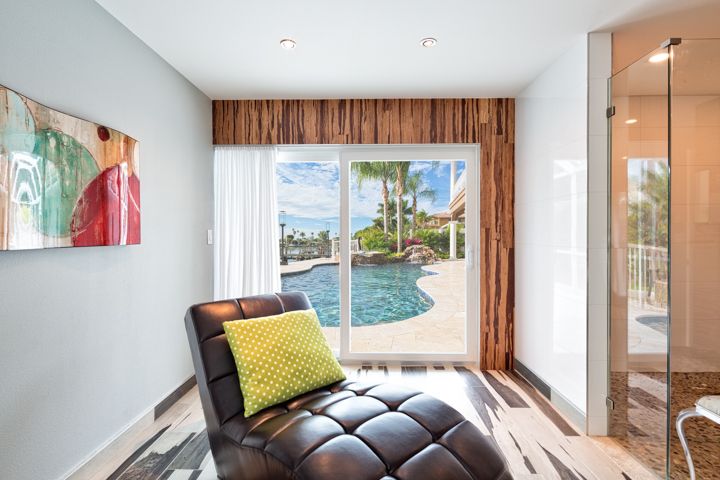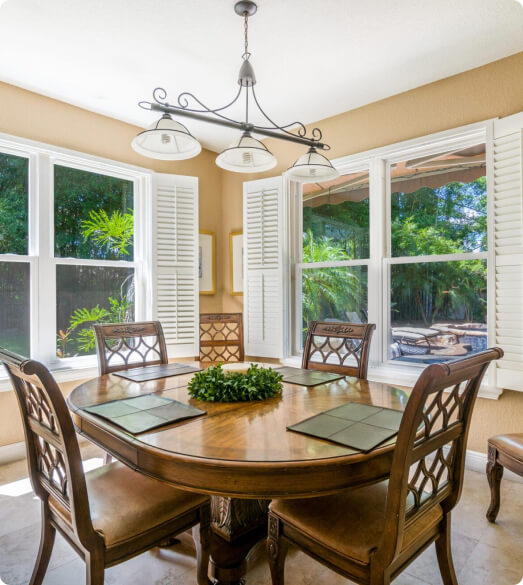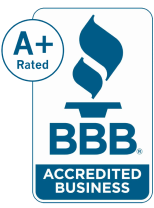Different Types of Replacement Windows We Install
There are many different types of replacement windows available, which means you can easily create the aesthetic you desire for your home. However, it can be difficult to choose which options are best, so we’ve created a helpful guide to provide the basic details about some of our most popular replacement window types:
Single-Hung Windows
Our single-hung windows feature two sashes of double-paned low-emissivity (energy efficient) eVantage™ glass. The top sash is fixed in place, while the bottom sash opens by sliding upward. The bottom sash can also tilt inward for easy cleaning. The frame and sashes are made of uPVC vinyl, which offers superior durability and thermal efficiency. All our single hung windows have self-locking mechanisms. Customization options include impact-resistance and a top arch in the upper pane.
Double-Hung Windows
Our double-hung windows are similar to single hung windows, except that both the upper and lower sashes can slide up and down or tilt open. They are also equipped with a constant force balance system. They also feature double-paned glass, and the grids are situated between the panes for easy cleaning. These windows have a more traditional look, making them an excellent choice for historical homes.
Sliding Windows
We also offer sliding windows, with one operable sash that slides open horizontally in front of the other for maximum airflow. These windows also come in impact-resistant options as well as with self-locking or manual locking options.
Picture Windows
Picture windows are fixed (cannot be opened) and often oversized to let in as much natural light as possible. We offer a variety of picture window options, with various sizes of rectangular and square panes available. These windows are low-maintenance, and like the rest of our windows, come in heavy-duty uPVC frames and with double panes of glass.
Shape Windows
We supply fixed windows in non-rectangular geometric shapes, such as round, octagonal, or arched. These shape windows can add visual interest and personality to a window array.
Casement Windows
Casement windows are a type of hinged window that opens outward, usually operated by a crank or lever. Known for their versatility and modern aesthetic, casement windows provide excellent ventilation and unobstructed views when open. They are often hinged on one side and swing open like a door, allowing for easy cleaning and maintenance.
Frequently Asked Questions (FAQs)
What Makes a Window Energy Efficient?
Energy-efficient windows are designed to minimize heat transfer between the interior and exterior of a building, helping to maintain a comfortable temperature inside. Key factors contributing to energy efficiency include:
- High-Quality Frame Materials: Materials with good insulation properties, such as uPVC or vinyl, help reduce heat transfer.
- Multiple Panes: Windows with multiple panes provide an additional layer of insulation.
- Low-E Glass: Low-emissivity coatings on glass reduce the amount of heat that is radiated through the window.
- Argon or Krypton Gas Fill: Some windows have inert gas (argon or krypton) between panes, further enhancing insulation.
How Do Low-Emissivity Coatings Contribute to Energy Efficiency?
Low-emissivity (Low-E) coatings are thin, virtually invisible layers of metallic particles on the glass surface. They contribute to energy efficiency by:
- Reflecting Infrared Radiation: Low-E coatings reflect a significant portion of infrared radiation, which helps keep heat inside during cold weather and outside during hot weather.
- Reducing Ultraviolet (UV) Radiation: Low-E coatings can block a portion of UV radiation, protecting interior furnishings from fading and damage.
What Is the Significance of Double-Pane or Triple-Pane Windows in Energy Efficiency?
- Double-Pane Windows: These windows have two layers of glass separated by a spacer. The space between the panes may be filled with air or a low-conductance gas like argon. The additional layer of glass provides better insulation than single-pane windows.
- Triple-Pane Windows: Similar to double-pane windows but with three layers of glass, triple-pane windows offer even higher insulation. They are particularly effective in extreme climates, helping to maintain a more consistent indoor temperature.
What are the Benefits of Choosing Energy Star-rated Windows?
- Improved Energy Efficiency: Energy Star-rated windows meet specific energy efficiency criteria set by the Environmental Protection Agency (EPA). They are designed to reduce energy consumption, leading to lower utility bills.
- Environmental Impact: Energy Star-rated windows contribute to a reduction in greenhouse gas emissions, promoting environmental sustainability.
- Comfort and Durability: These windows are tested for performance in various conditions, ensuring they provide comfort and durability over the long term.
- Potential for Incentives: Choosing Energy Star-rated windows may make you eligible for energy efficiency incentives or rebates, depending on local programs.
Learn More About Different Types of Replacement Windows
Contact us at New South Window Solutions today to learn more about our different types of replacement windows and to set up a free consultation.

